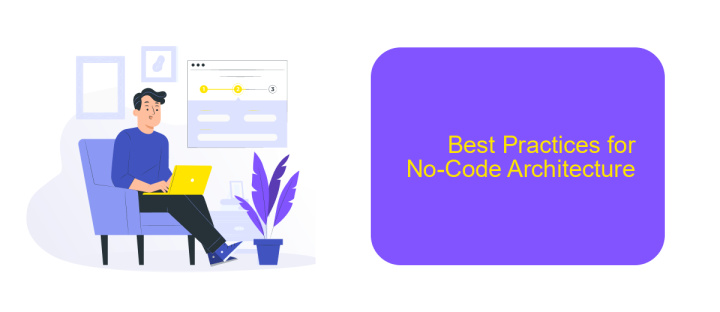No-Code Architecture
No-Code Architecture is revolutionizing the way software is developed by empowering individuals to create complex applications without writing a single line of code. This approach democratizes software development, making it accessible to non-technical users while significantly speeding up the development process. By leveraging intuitive visual interfaces and pre-built components, no-code platforms enable rapid prototyping and deployment, fostering innovation across various industries.
Introduction
No-Code Architecture is revolutionizing the way businesses develop and deploy applications. By eliminating the need for traditional coding skills, it empowers non-technical users to create sophisticated software solutions. This approach not only reduces development time but also lowers costs and democratizes access to technological innovation.
- Rapid Development: Build applications quickly without writing code.
- Cost Efficiency: Save on hiring specialized developers.
- Accessibility: Enable non-technical staff to participate in development.
One of the key components of No-Code Architecture is the ability to seamlessly integrate various services and applications. Tools like ApiX-Drive make it easy to connect different platforms, automating workflows and enhancing productivity. By leveraging such integration services, businesses can streamline operations and focus on their core activities, achieving greater efficiency and scalability.
Benefits of No-Code Architecture

No-Code Architecture offers numerous benefits, making it an attractive option for businesses of all sizes. One of the primary advantages is the significant reduction in development time. By eliminating the need for extensive coding, projects can be completed much faster, allowing companies to bring their products to market more quickly. This approach also reduces costs, as it minimizes the need for specialized developers and extensive testing. Additionally, No-Code platforms empower non-technical team members to contribute directly to the development process, fostering greater collaboration and innovation within the organization.
Another key benefit of No-Code Architecture is its flexibility and ease of integration. With tools like ApiX-Drive, businesses can effortlessly connect various applications and automate workflows without writing a single line of code. This simplifies the process of integrating third-party services, ensuring seamless data flow and enhanced operational efficiency. Furthermore, No-Code solutions are highly scalable, allowing companies to adapt and grow their digital infrastructure with minimal disruption. Overall, No-Code Architecture democratizes technology, enabling more people to create and innovate without the traditional barriers associated with software development.
Challenges of No-Code Architecture

No-Code Architecture offers numerous advantages, but it also presents several challenges that organizations must navigate. One significant challenge is the limited customization options, as no-code platforms often provide pre-built templates and components that may not fully meet specific business needs.
- Scalability Issues: As businesses grow, the scalability of no-code solutions can become a concern. These platforms may struggle to handle increased data loads and user demands.
- Integration Difficulties: Integrating no-code solutions with existing systems and third-party services can be complex. While tools like ApiX-Drive can facilitate these integrations, they may still require some technical knowledge.
- Security Concerns: No-code platforms might not offer the same level of security as custom-coded solutions, making them vulnerable to potential breaches and data leaks.
- Vendor Lock-In: Relying heavily on a single no-code platform can lead to vendor lock-in, limiting flexibility and increasing dependency on the platform provider.
Despite these challenges, no-code architecture remains a powerful tool for rapid development and deployment. By carefully evaluating and addressing these potential issues, organizations can effectively leverage no-code solutions to drive innovation and efficiency.
Best Practices for No-Code Architecture

No-code architecture empowers businesses to develop applications rapidly without traditional coding. To maximize its benefits, it's essential to follow best practices that ensure efficiency and scalability. Begin by clearly defining your project requirements and goals to choose the right no-code platform tailored to your needs.
Next, focus on user experience and design. Utilize templates and pre-built components to maintain consistency and streamline the development process. Ensure that the interface is intuitive and user-friendly, which will reduce the learning curve for end-users.
- Regularly update and maintain your no-code applications to keep them secure and functional.
- Use services like ApiX-Drive to integrate various tools and automate workflows seamlessly.
- Test your applications thoroughly before deployment to identify and fix any issues.
- Document your processes and configurations to facilitate future updates and troubleshooting.
By adhering to these best practices, you can create robust, scalable, and efficient no-code solutions that meet your business objectives. Embrace the flexibility and speed of no-code development while maintaining a structured approach to ensure long-term success.
Future of No-Code Architecture
The future of No-Code Architecture is poised to revolutionize the way businesses and developers approach software development. As technology continues to advance, no-code platforms will become more sophisticated, offering a wider range of functionalities and integrations. This evolution will empower non-technical users to create complex applications and workflows, reducing the dependency on traditional coding expertise. The democratization of software development will lead to faster innovation cycles, enabling companies to adapt quickly to market changes and customer needs.
One significant aspect of this future is the seamless integration of various services and applications. Tools like ApiX-Drive will play a crucial role in this landscape by simplifying the process of connecting different software solutions. With ApiX-Drive, users can automate data transfers and synchronize information across multiple platforms without writing a single line of code. This capability will enhance productivity and streamline operations, allowing businesses to focus more on strategic initiatives rather than technical challenges. As a result, the adoption of no-code solutions will continue to grow, driving a new era of digital transformation.
FAQ
What is No-Code Architecture?
Who can benefit from No-Code Architecture?
How does No-Code Architecture improve efficiency?
Can No-Code Architecture handle complex integrations?
Is No-Code Architecture secure?
Apix-Drive will help optimize business processes, save you from a lot of routine tasks and unnecessary costs for automation, attracting additional specialists. Try setting up a free test connection with ApiX-Drive and see for yourself. Now you have to think about where to invest the freed time and money!

